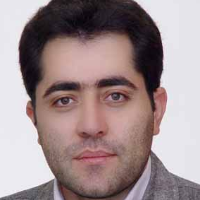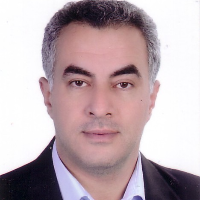Evaluating The Quality of Higher Education From The Perspective of Students: A case study of Urmia University of Medical Sciences
It is possible to know the performance of university systems (activities and their results) through its dual form - quantity and quality - both of which show a complex reality. Educational and research phenomena in universities are born in such a complex field. Therefore, the "tools for determining" quality in higher education, regardless of this field, achieve a superficial knowledge of it and create an illusion of "certain knowledge" of it. Considering higher education as the wealth and capital of nations and societies and its role in the knowledge economy, higher education institutions to reduce costs, create added value to overcome their competitors, realize new expectations of internal and external stakeholders, interact with the working world community, promote Continuously improving the quality of teaching and learning and research, as well as responding to the increase in demand, have paid special attention to the quality of education. The quality of education has been one of the main concerns of higher education systems in most countries of the world (Parand & Qayyumi, 2017). With the spread of higher education and the limitation of public expenses, the sensitivity of the stakeholders towards the quality of higher education and its added value has increased (Shirbagi, 2011). Service quality is recognized as the main determinant of an organization's success in the current changing environment, and any decrease in customer satisfaction due to poor service quality is cause for concern (Van Duong, Binns & Lee, 2004).The study of student satisfaction plays an important role in improving the quality of education; therefore, one should first try to recognize the possible gap and eliminate or reduce this gap between the existing and the desired situation. Due to the importance of this issue and the fact that no study was found in Urmia University of Medical Sciences to identify the quality of education in the literature review, this research was conducted with the aim of determining the gap in the quality of education in Urmia University of Medical Sciences by receiving the opinions of working students studying in this university. In this way, to analyze the existing inadequacies and provide targeted solutions to reduce the quality gaps observed in the field of educational services. Therefore, the following research questions have been raised:1- What are the components of the higher education quality questionnaire?2- What is the status of educational quality in Urmia University of Medical Sciences?3- What is the status of educational quality dimensions in Urmia University of Medical Sciences?4- Is the status of educational quality in Urmia University of Medical Sciences different according to the gender variable of students?5- Is the status of educational quality in Urmia University of Medical Sciences different according to the respondent's faculty?Considering the role of universities of medical sciences in the education of students who play an essential role in promoting the health of the society, this research was conducted with the aim of evaluating the quality of the education process in Urmia University of Medical Sciences from the students' point of view.According to the research questions, the approach of the current research is quantitative and positivist in terms of the method of data collection and analysis, and its strategy was descriptive-survey. Survey is one of the methods of data collection in which information is collected through people who are called respondents and answer the questions. This method, which is used more than any other research method in behavioral science studies, can be used in all kinds of exploratory, descriptive, explanatory and evaluation studies (Saadipour, 2015). This descriptive-survey research was conducted in Urmia University of Medical Sciences in 2019. The statistical population includes all students of Urmia University of Medical Sciences. The number of 384 people was selected as a statistical sample using the table (Krejcie & Morgan, 1970) by the method of relative stratified sampling. To collect data from Mantz York's higher education quality questionnaire (Yorke, 1995) used. Finally, 336 completed questionnaires were returned.Exploratory factor analysis was used to identify the components of the higher education quality questionnaire. For the purpose of exploratory factor analysis of the present questionnaire, principal component analysis method with varimax rotation was used. Based on the information in Table 2, which shows the results of the Como and Bartlett test. Como's value is 0.70 and the result of Bartlett's test is also significant and indicates that the data are suitable and sufficient for factor analysis.To analyze the data, t-tests, one-way analysis of variance were used with the help of SPSS software. According to the results of the research, the dimensions of the higher education quality questionnaire include six factors of the educational program and goals, teaching method and quality, educational facilities and equipment, measurement and evaluation, educational satisfaction and feedback. From the point of view of the students, the high quality of education in Urmia University of Medical Sciences is not in a favorable condition. In all aspects of the quality of higher education, there is a significant difference between the desired situation and the current situation. The largest distance was related to the dimension of educational satisfaction and the smallest distance was related to the educational program and goals. Also, the results showed that there is no significant difference in the quality of higher education in Urmia University of Medical Sciences according to the respondents' gender and faculty. From the perspective of students, the quality of higher education in Urmia University of Medical Sciences was below average. Therefore, in order to improve the quality of the education process, detailed planning and practical measures must be taken in line with the educational and research demands and expectations of the students.In this regard, the results of the research indicate that the government should improve the budget in public universities, build infrastructure, create higher quality units, and attract and retain qualified academic staff to ensure the quality of education.
- حق عضویت دریافتی صرف حمایت از نشریات عضو و نگهداری، تکمیل و توسعه مگیران میشود.
- پرداخت حق اشتراک و دانلود مقالات اجازه بازنشر آن در سایر رسانههای چاپی و دیجیتال را به کاربر نمیدهد.



